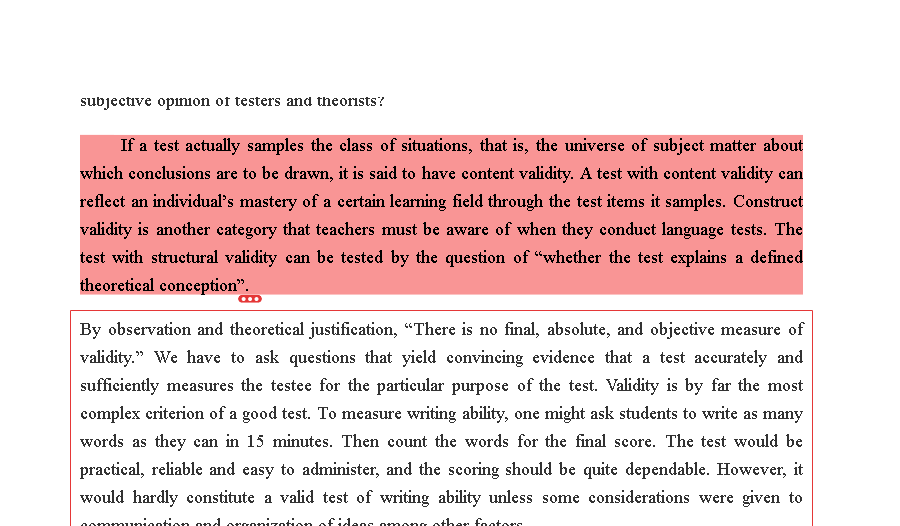时间: 2022-03-03 12:28:17 来自: 在线版
在“H.D.Brown《语言学习与语言教学的原则》(第3版)笔记和课后习题详解”的内容第0页备注了学习笔记
the most complex criterion 最复杂的标准By observation and theoretical justification, “There is no final, absolute, and objective measure of validity.” We have to ask questions that yield convincing evidence that a test accurately and sufficiently measures the testee for the particular purpose of the test. Validity is by far the most complex criterion of a good test. To measure writing ability, one might ask students to write as many words as they can in 15 minutes. Then count the words for the final score. The test would be practical, reliable and easy to administer, and the scoring should be quite dependable. However, it would hardly constitute a valid test of writing ability unless some considerations were given to communication and organization of ideas among other factors.
点击查看资料全文:前往在线阅读下载全文

用户188****7120正在学习的资料简介:
H.D.Brown《语言学习与语言教学的原则》(第3版)笔记和课后习题详解

手机扫码阅读全文
第1章 语言,语言学习和语言教学
1.1 复习笔记
1.2 课后习题详解
第2章 第一语言习得
2.1 复习笔记
2.2 课后习题详解
第3章 第一语言习得与第二语言习得对比
3.1 复习笔记
3.2 课后习题详解
第4章 人类学习
4.1 复习笔记
4.2 课后习题详解
第5章 学习方式和策略
5.1 复习笔记
5.2 课后习题详解
第6章 人格因素
6.1 复习笔记
6.2 课后习题详解
第7章 社会文化因素
7.1 复习笔记
7.2 课后习题详解
第8章 对比分析、中介语和错误分析
8.1 复习笔记
8.2 课后习题详解
第9章 交际能力
9.1 复习笔记
9.2 课后习题详解
第10章 语言测试
10.1 复习笔记
10.2 课后习题详解
第11章 第二语言习得理论
11.1 复习笔记
11.2 课后习题详解
